How to Become A Preaching Ninja

Ninjas aren’t born. They’re made.
Ninjas are made through a continual, life-long pursuit of mastering their art.
What is a preaching ninja? It’s the preacher who understands how crucial it is to master the art of preaching. It’s the preacher who won’t settle for anything less than the best they can bring. It’s the preacher who recognizes they always have areas that can improve.
If you’re like me, you know how important it is to work on your preaching but it’s hard to know what to focus on. There are so many things pulling at your time that it makes it tough to justify spending time and energy on improving yourself as a preacher.
But I’m convinced that there is not a greater gift you could give your church than to bring your best every time you preach and commit to continually improving your craft as a preacher.
I have put together a helpful resource that reveals a proven process of sermon prep and delivery that will save you time and increase the impact of your messages. I
...7 Steps to Writing a Sermon – Part Two – Digging into Scripture
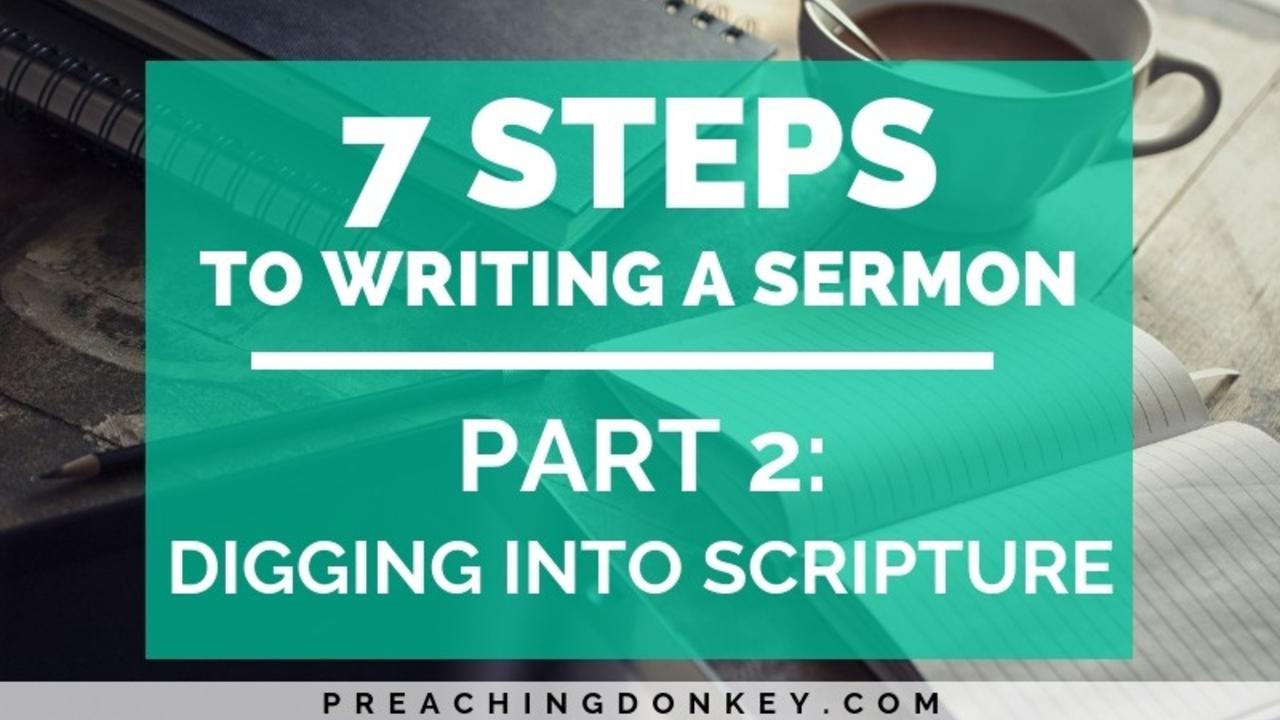
In this series of posts, I am revealing a practical guide to go from a blank page to ready for Sunday in seven steps. If you work through the seven action steps in this series, you’ll have a sermon written and be ready to go. In Part 1 of this series we looked at step one which was to determine a topic, title and hook. If you haven’t checked out that post yet, find it here. For today, let’s dive into step two:
Step 2: Dig into the Scripture.
Once you’ve selected a passage of scripture to work from you should begin studying it first. If you are working with a topic and you need to find where the Bible addresses it you could use BibleGateway.com, YouVersion.com or Biblehub.com to search for passages that deal with that topic. It’s good to anchor your message to a particular passage of Scripture and then pull in other supporting texts as needed to support and bolster your points.
How do you study a passage to preach on it?
In Howard Hendricks’ Living By The Book: The Art and Science ...
7 Steps to Writing a Sermon – Part One – Picking a Topic, Title & Hook
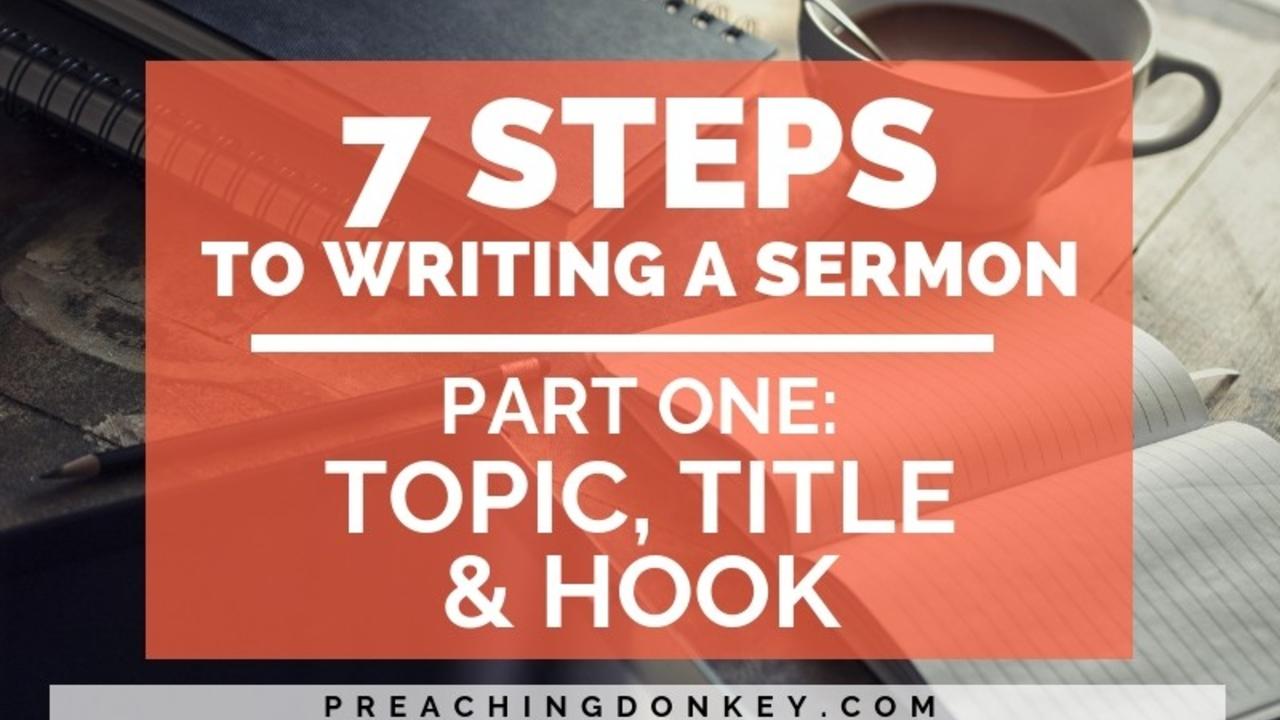
In a series of posts entitled “So You Think You Can Preach? 6 Steps to Get Started Preaching” I walked through at all the ways to pursue preaching opportunities for those who are just beginning as a preacher. I suggested starting where you are… in your Bible study or small group… and continuing to look for opportunities to preach outside of that. Today I want to take you to the next level and reveal how to write a sermon.
So, let’s say you’ve led some Bible studies and small groups and you’re feeling relatively confident about teaching in small group contexts. But recently your pastor has tapped you on the shoulder and said, “Would you preach on Sunday night in two weeks?” Or you got a call from a church that is without a pastor and have been asked to fill in next Sunday.
Where do I start?
This is so exciting! This is what you’ve been waiting for! But you have some aching questions: What do I do? Where do I start? A sermon is different than what you’ve done to this point. A lesson ...
9 Gift Ideas for Pastors (That They’ll Actually Like)

Every year when the holidays roll around there are lots of people who genuinely want to give back to their pastors with some sort of gift. This, by the way, is NOT something we expect as pastors nor would we ever feel entitled to it.
But, gifts do come our way sometimes. People in our churches want a way to say ‘thank you’ for caring for their families, ministering to them, being there for them when they need us and leading them spiritually.
As someone who loves pastors and appreciates the sacrifices they make for their churches, I want to give you a list of gift ideas that your pastor will actually like.
Here’s the thing: most pastor gifts are so not good. Like so not good, and no pastor wants them. I know hundreds of pastors, and I can guarantee you, none of them are sitting around saying, “I sure wish someone would give me a calendar-paperweight-magnet with a deer and an an inspirational verse on it!”
So, if you really want to get your pastor a gift they’ll actually like, here ...
Four Things I’m Thankful for as a Preacher

One of the most fulfilling things I get to do as a pastor is preach. It is not easy, but it doesn’t need to be easy. I still love it. I’m sure you love it too. To celebrate the joys of preaching, this Thanksgiving Day I want to share four things I’m thankful for as a preacher:
1. I’m thankful for getting to do what I love.
Preaching gives me an opportunity to do something I really enjoy. I love to inspire, challenge, motivate and encourage others. I love to be creative and think outside the box. I love to develop and present content that helps people. Preaching encompasses all of these wonderful things. It is an art that I love to work on and improve. I’m thankful for preaching because I love to do it. It’s exhilarating. If you preach you understand exactly what I’m talking about.
2. I’m thankful when I see how God used me to work in someone’s life.
I’ve written about how to get more helpful feedback on your sermons because specific input is the best way to know how to improve. Bu...
How to Start a Sermon for Maximum Impact

The opening words of your sermon can fall flat if you don’t have a good plan. It’s good to be intentional about the way you introduce a message. I will walk you through exactly how to start your sermon for maximum impact and engagement. We’ll focus on how to capture and maintain the interest of your listeners in the first 5-6 minutes of your message. Let’s jump in to the most important part – the first 1.5 minutes.
THE FIRST 90 SECONDS
The first 90 seconds of your sermon are some of the most powerful seconds you have. This is when your listeners’ attention is most optimal and when they are giving you their undivided attention.
Don’t waste these moments. Your listeners decide within these first 90 seconds whether they will keep listening to you or not. This is particularly true if they don’t know you. But even if they do know you and like you as a preacher, every Sunday is a new opportunity to engage them or lose them. And both engagement and disengagement happen faster than you thin...
How to Build Tension When You Preach
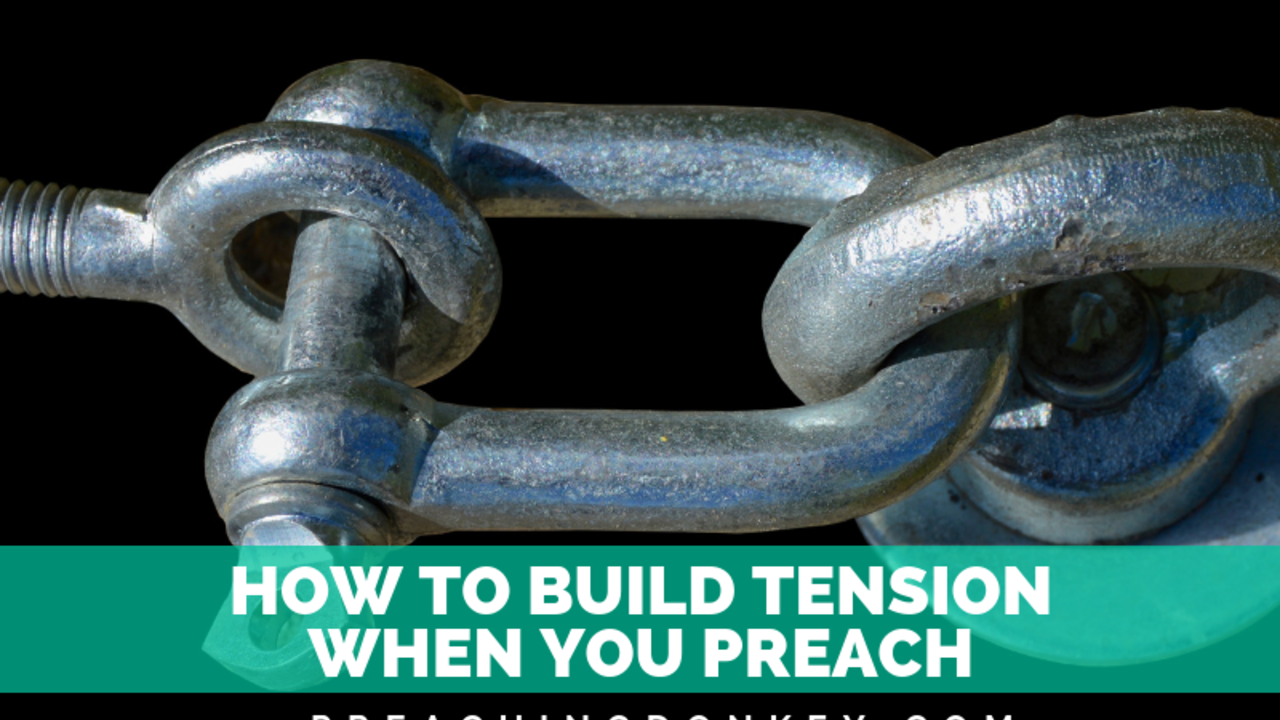
In the days before Netflix, Hulu, Amazon Prime and other streaming services ruled the media viewing world, I was really into box dvd sets. They were all the rage, and I was all in.
Lost was the first TV show I watched on dvd with each episode in immediate succession. I was in college at the time and had a load of classes for which I should have been studying. But instead I would watch an episode and go immediately to the next and the next and the next. I would tell myself, “This is the last episode tonight.” But inevitably I would push it to one or two more. Why?
Tension.
The producers of Lost (and every good TV show before or since) were masterful at building tension. They knew the secret to keeping people on the edge of their seat and coming back for more.
Television and movie producers understand something a lot of preachers do not: You have to make people care about your content before they’ll give their attention to more of it.
THE CARDINAL MISTAKE OF MOST PREACHERS
As pr...
How to Start a Self-Hosted Blog in 20 Minutes
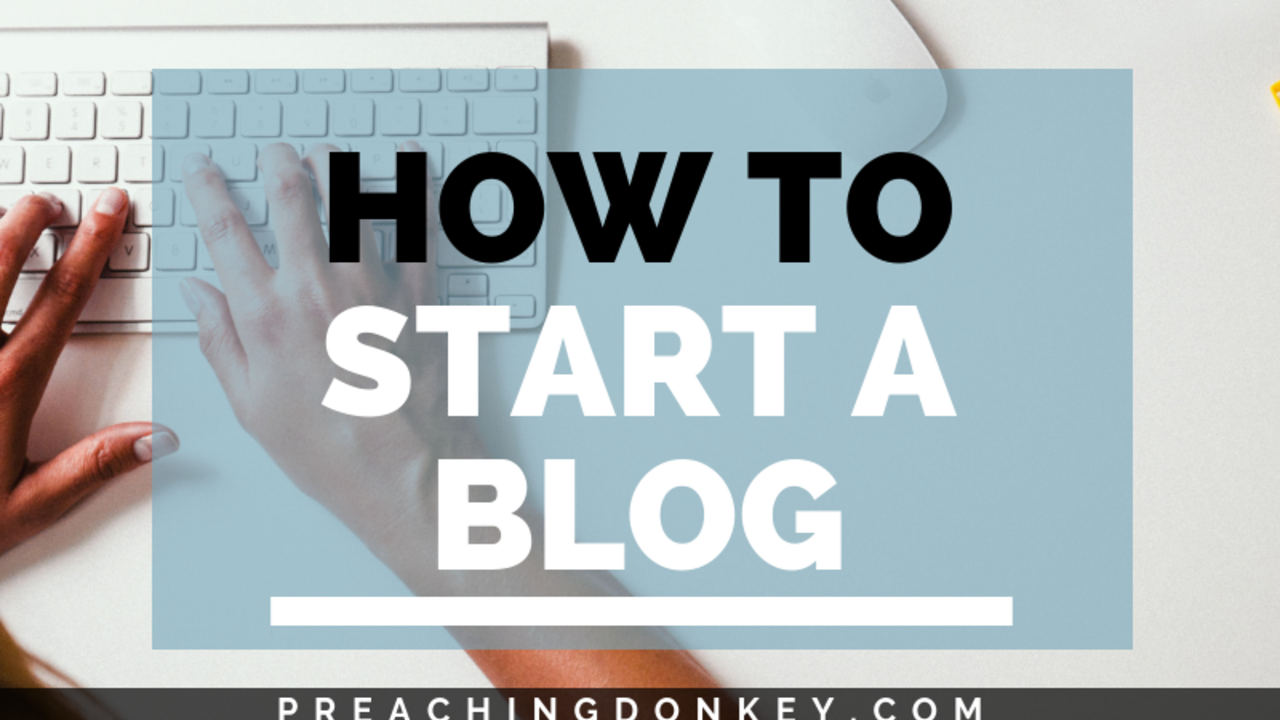
I dove into blogging four years ago, and I absolutely love it. Blogging is how I share my passion with the world. It has helped me reach an audience that I would have NEVER been able to reach. And it enables me to share a message with thousands of people … and more every day.
Many people have asked me along the way how they can get started blogging. Perhaps you would like to start blogging as well but you’re not sure how to get started. The good news is it’s easy to start a blog and you can get it up and rolling quickly – in 20 minutes or less.
In this article I will walk you through a simple, step-by-step process to start your blog. I will guide you through determining a topic, picking a domain name, choosing a platform to host your blog, and writing your first posts. But first…
3 REASONS TO START A BLOG
Before we dive into how to get started blogging, I want to point out a few reasons why starting a blog can be such a rewarding journey.
Blogging can help you make a bigger impact...
Four Destructive Mindsets That Can Wreck Your Preaching
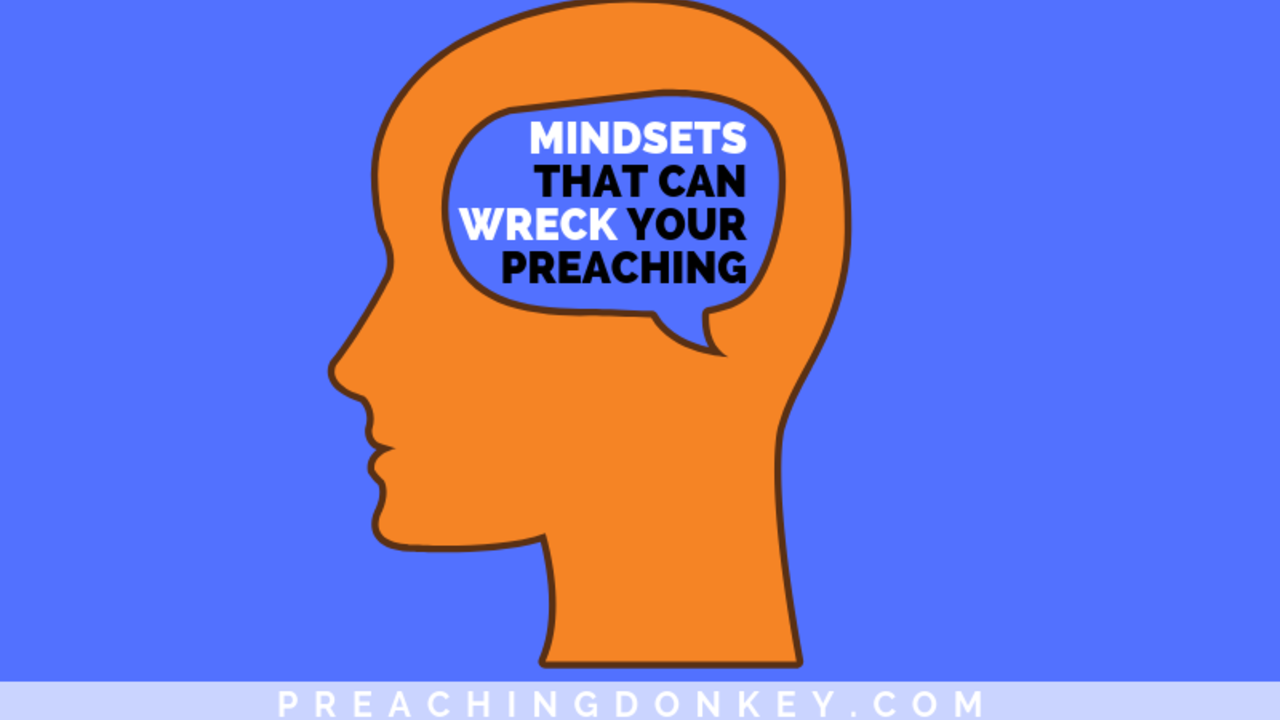
It was Henry Ford who said, “Whether you think you can, or you think you can’t–you’re right.” He was conveying a powerful truth: the way we think about ourselves effects the outcomes we see in life. This is never more true than how we think about our preaching.
I want to share with you the four common destructive preaching mindsets that I have seen wreck people’s preaching. What is a preaching mindset? Simply put, it is the story we tell ourselves about our preaching. And that story drives more than we think.
As I share these four mindsets, I am speaking largely to my own experience with a few of these because I’ve been guilty of telling these stories to myself as well. As you read, you may see yourself in some of these, too. Here are the mindsets that every preacher must learn to overcome.
Mindset #1 “I don’t need to improve; I know all there is to know about preaching.”
This mindset is particularly destructive because the preacher who thinks this way generally has a host of blind...
How to Preach Conversationally
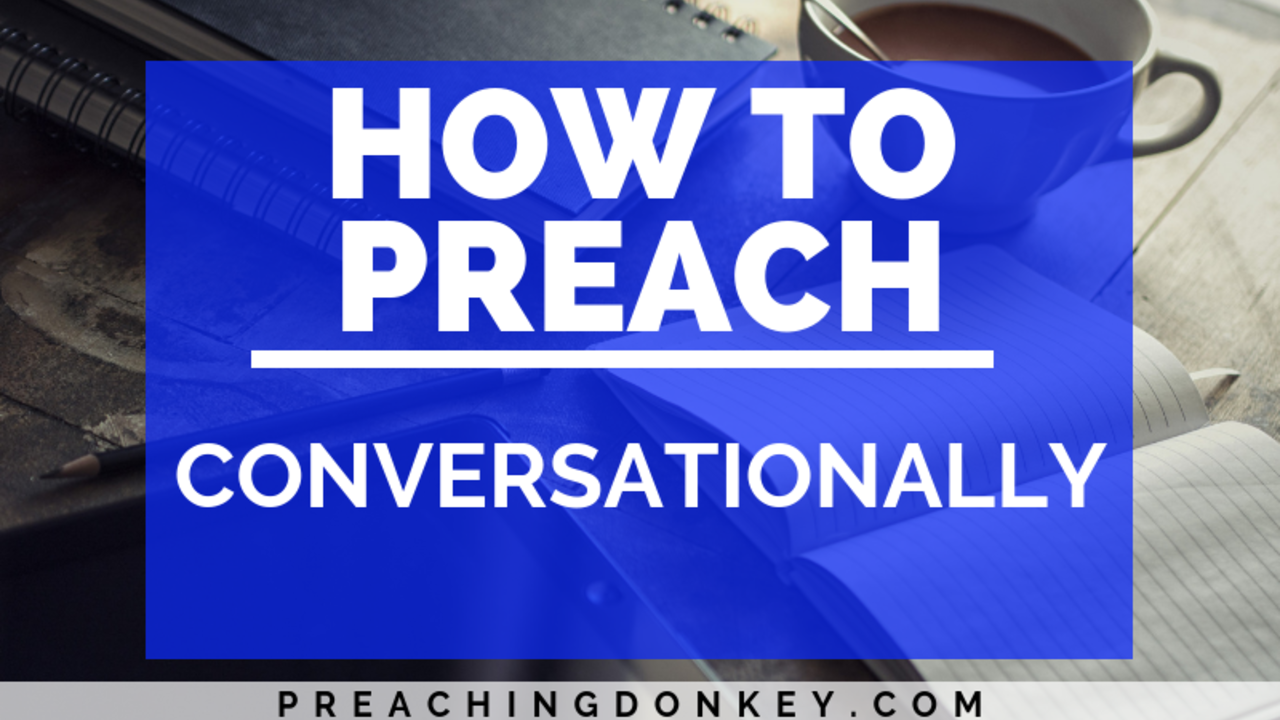
What is conversational preaching? What does it look like to preach in a conversational tone? There are many different styles and methods to use when we preach – proclamational, authoritative, narrative – to name a few. And we may employ any number of these styles throughout a preaching career and even in a single sermon. But the tone that, I believe, should pepper our messages is a conversational tone. This article will explain the importance of conversational preaching and how we can utilize it. But first it’s important to define it.
Preaching conversationally is not about having a light-hearted, folksy cadence to your speech. Rather, it’s more about how you place yourself in the seat of your listeners and make them feel heard. To preach conversationally, anticipate what your listeners are thinking and seek to give them a voice when you preach. If preachers seek to speak in a conversational tone, they will empathize with their listeners and become expert at demonstrating that they u...


